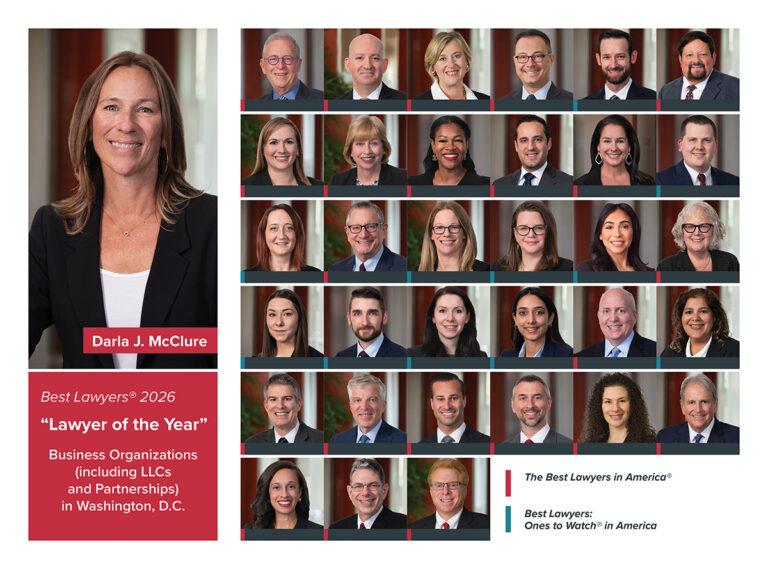September 14th, 2017
Special Considerations in Valuing Professional Practices
Posted in: Tax Law Tagged: David S. De Jong
Author: David S. De Jong

IRS Circular 230 Disclosure
The information contained in this presentation is not intended to provide Federal tax advice within the meaning of IRS Circular 230, but is a presentation prepared and/or designed to provide educational content and an avenue for free exchange of ideas of interest to the members and guests attending this NACVA State Chapter Foundation event. Information provided herein may be incomplete or fictitious and may not be used in a court of law or in any legal proceedings. As a condition to the use of this presentation, the user hereby agrees to the above conditions.
Traditional Definition of a Professional Practice
An occupation in which services can only be rendered by a person or entity licensed or otherwise authorized to render the service.
Characteristics of a Professional Practice
- Occupation generally regulated by the State
- Education requirements include CPE
- Can only be owned typically by those licensed in that profession
- Cannot in most professions be insulated from malpractice of self or anyone supervised
- Limited liability entities designated generally as PA, PC or Chartered if incorporated or as PLLC or PLLP if not
Special Tax Rules for Professional Practices (also applicable to certain other personal services businesses)
- C corporations taxed at flat 21 percent
- C corporations must utilize a calendar year (or face “minimum distribution requirement” with September 30, October 31 or November 30 FY)
- No requirement to use accrual accounting for tax purposes irrespective of gross receipts
Scope of the Presentation
This includes accountants/tax preparers, financial planners and engineers who may in some instances be uncredentialed and/or unlicensed.
Excludes real estate salespersons and physical therapists who may be credentialed and/or licensed.
Limitation on the presentation
A fair value or fair market value standard is assumed under which the price that a willing buyer would pay a willing seller must initially be determined. Where intrinsic or a similar standard of value is utilized (e.g., marital dissolutions in Virginia), price on a hypothetical disposition becomes irrelevant and economic value takes its place.
In the absence of a directive in an agreement among co-owners, most states use a fair value standard in dissenting shareholder/partner disputes (if at all, discount only at the entity level for lack of liquidity based upon state law/caselaw).
Most states use a fair market value standard in family law (discount at the shareholder/partner level for lack of liquidity/lack of control), with New Jersey a major exception (fair value).
Special Overall Considerations in Valuating a Professional Practice
Agreements among co-owners. Multiple owner professional practices are more likely to have a shareholder/partnership/LLC operating agreement than other businesses. In some engagements, the valuation or methodology for valuation set forth in the document will control. In other engagements, a court may consider the value determined by the agreement, but is not bound to that number. You may be asked to determine both the value under the agreement and the value as if no agreement existed.
Additions/subtractions when using market approach. In a professional practice, the typical conveyance is hard assets (furniture, fixtures and equipment) subject to purchase money debt (unpaid portion of the liability to acquire these items). Added to value, generally undiscounted, is cash and collectible accounts receivable/work in progress and subtracted from value are all other liabilities.
Cash basis financials. For most professional practices, cash basis accounting is more meaningful to the owner(s) than accrual basis as professional practices tend to have little cash on hand, making both bill paying and distributions constantly dependent on incoming cash. Accordingly, accrual basis financials are rarely available unless you are able to go to subsidiary records to determine receivables, work in progress, payables and other accruals as well as their effect on the historic income statements. This will make it easier to use cash flow rather than profit if you are using an income approach to valuation.
Receivables and work in progress. Many professional practices, especially physicians and attorneys, have large receivables and little payables. This will necessitate determining collectibility, particularly if your valuation is with an asset approach or a market approach.
Malpractice/grievance actions. Pending or possible malpractice actions may necessitate adjustments under most methods of valuation. Verify the presence of malpractice insurance above a “deductible.” A history of malpractice claims and/or grievances does not bode well for the future including marketability of the practice.
Lack of control discount. Professionals in group situations tend to transition from one practice to another during their careers more than those in other businesses. Accordingly, it is more difficult for many professionals to not be in control of governance of the practice. A larger discount than usual may be appropriate for determining fair market value of non-controlling interests especially where there is a history of disharmony.
Lack of liquidity discount. Professionals can usually only sell a practice to those licensed in that profession. Additionally, few within a profession but outside the particular group practice wish to buy into a group of diverse personalities. This may require use of a larger than usual discount in determining the fair market value of fractional interests in professional practices. However, in the case of certain professions, especially dental and accounting, there is an active marketplace with practice brokers, and a smaller than usual discount may be appropriate where a 100 percent interest is being valued. The opposite may exist in the case of professions considered quite personal such a psychiatry/ psychology and obstetrics/gynecology.
Rapid decline in solo practice value during inactivity. On death or disability of a sole practitioner, the practice value will drop dramatically by the week (especially if client/patient needs go unserviced). A valuation done under such circumstances must take this loss of value into account.
Intangibles. In a professional practice, the value of the intangibles is more likely to constitute most of the overall value than in the case of other businesses and goodwill is more likely to be personal (professional) than in other businesses. In a minority of states, personal goodwill as well as institutional (enterprise) goodwill is marital/community in nature and no breakout is necessary. However, in a slight majority of states, personal goodwill is nonmarital/ noncommunity and must be broken out from institutional goodwill. This will necessitate knowing under state law/caselaw how the division of goodwill is to be accomplished. At least one state, Mississippi per 2002 decision of its Supreme Court, appears to treat all goodwill as nonmarital property.
How Do You Breakout Personal and Institutional Goodwill?
- Broad personal – difference between price with and without reasonable covenants (in which case most goodwill of a practice is personal)
- Narrow personal – portion of goodwill that is lost following a transition notwithstanding the seller’s reasonable covenants (in which case most goodwill of a practice is institutional)
- A school of thought that is emerging qualifies the difference between these numbers as conveyable personal goodwill
- Middle ground – goodwill is divided based on a subjective or objective assessment of attributes between personal and institutional
Multiattribute Utility Model (MUM)
MUM is an allocation model for distinguishing institutional goodwill from personal goodwill in an objective manner by quantifying and weighing otherwise subjective factors. MUM may be useful where a state has adopted a middle ground approach or otherwise permits the discretion of the valuator. MUM was first accepted by an appellate court in 2006 (Illinois).
Personal Goodwill Attributes
- Ability, skill and judgment of individual
- Work habits of individual
- Age and health of individualPersonal reputation
- Staff loyalty to individual
- Business carries name of individual
- Name recognition of individual
- Referrals are to individual
- Closeness of contact
- Importance of personal service
Institutional Goodwill Attributes
- Overall practice reputation
- Effective workforce in place
- Nonpersonal business name
- Favorable business location
- Multiple locations
- Practice-wide marketing
- Referrals to practice rather than individual
- Practice owns intellectual property
A Market Approach to Valuation is More Feasible in a Professional Practice
- Large numbers of comparables are available for many professional practices (medical practices have their own database – “Goodwill Registry”)
- Data derived tends to have more of a commonality
- Practices often have prior transactions between willing seller and willing buyer
- Practices often sell for percentages of gross revenue (easier than normalizing cash flow/income)
- Brokers are available to discuss “real world” numbers in the case of many types of practices
What Makes Professional Practice More Valuable than the Comparables?
- Specific location (accessible and with minimum 4-5 years on lease)
- High growth area
- Affluence
- Nontransient patients/clientele
- Repeat patients/clientele
- Large referral base
- Name recognition
- Lack of competition
- Year-round business
- Diverse capabilities
- No single dominant client (attorney, accountant, etc.)
- Depth of employment talent
- Duration of practice
- Higher fee schedule (physician, dentist – few HMOs)
- Profit margin
- Less work for same pay
If You Use an Income Approach to Valuation
The past is more likely to be indicative of the future in an established professional practice (facilitating the capitalization of normalized prior earnings) which can be particularly important in states which view discounting future earnings as inappropriate because the method projects post-divorce earnings.
BUT…
Normalization of compensation may be more difficult for professional practices than in other businesses. (Is reasonable compensation tied to (a) replacing professional with one who is comparable, (b) replacing professional with capable but more entry-level person, or (c) what professional could earn elsewhere?)
If You Use an Asset Approach to Valuation
A practice without goodwill (or institutional goodwill if that is all being considered) may still have a going concern value to be considered in the adjusted asset method for its institutions in place (personnel, lease, equipment, policies and patients/clients). It is often valued based on the costs to replicate.
Medical Practices
Medical practices were sold most easily until the late 1980s. During the decade that followed, as indemnity plans gave way to managed care, hospitals, carriers and other consolidators constituted most of the purchasers. In the last decade, many consolidators divested themselves of their acquisitions from the 1990s and private activity returned spurred in part in some areas by physicians who are first and second generation Americans often with family money for acquisitions.
Today most medical practices, when they can be sold, transfer in the range of 40-55 percent of annual gross often translating to about 100 percent of owner’s discretionary earnings where a single owner. While general family and internal medicine practices used to sell at higher multiples of gross than specialty practices due to the recurrence of patients, this no longer appears to be the case.
Marketability remains an issue today, particularly in specialty practices where transition of referral sources is paramount. Sole practices involving the most personal of services (e.g., OB-GYN, psychiatry) are often shut down without sale.
Multiowner practices often transition in stages with a purchaser paying only as little as cash basis book value for shares or units with the remaining “price” (for the net accounts receivable and goodwill) coming in the form of a compensation adjustment after determining tentative “draws” based on productivity.
Where the practice has had such transactions, evidence of value of an interest may be hidden but arguably distorted by the favorable tax treatment to the buyer and the adverse tax treatment to the seller caused by compensation adjustments.
Today, pain management practices are a growth area of the market and may change hands at seemingly unlikely multiples. And once again in parts of the country hospitals are acquiring practices or guaranteeing minimum compensation levels to physicians.
Law Practices
Few law practices convey outside of terms of a prior or contemporaneous agreement among co-owners or with a rising associate. While the ethical prohibitions to such a sale have been eroded in recent years, there is little outside market as goodwill is considered personal in almost all situations. Exceptions include firms which derive most of their clients from mass media advertising (generally personal injury practices) and large institutional firms (however, their value is almost always determined by an existing agreement commonly honored by the courts).
In smaller firms, agreements among principals typically make no allowance for goodwill and give the outgoing principal a return of his or her “investment” in the practice including the portion tied up in receivables and work in progress.
In larger firms, an additional payout is often made taking the form of nonqualified deferred compensation which, if vested, is often best stated as a separate asset and may need to be discounted if paid out over time and/or bears risks of uncollectibility.
For most law firms, value in the absence of a controlling agreement is best determined using the adjusted net asset (economic book value) method starting with the cash basis book value and making the following adjustments:
- Restate the hard assets to fair market value. They may carry little or no book value due to the ability to expensing/bonus depreciation for tax purposes. The adjustment may be insignificant as used furniture and equipment may be worth as little as 10-15 percent of original cost.
- Determine the collectible accounts receivable and work in progress, considering that it is more difficult to bill and collect these items post-retirement.
- Ascertain how contingency cases are to be valued under state law/caselaw (if transferred, the original attorney may be paid for time or more likely get a percentage of overall attorney fees).
Alternatives for Valuing Contingency Cases
- Case by case basis where a small number and likely recovery and percentage worked can be determined
- Historic averages on collections per case times assumed average of each case 50 percent worked (possibly adjusting upward or downward for larger cases)
- Historic averages based on taking hours worked on outstanding cases and applying a recovery factor per hour worked
- Valueless unless and until an amount is realized
Dental Practices
Dental practices have an active market with multiple practice brokers in most metropolitan areas. With a number of practitioners delaying retirement due to financial setbacks in their outside investments, buyers are often left waiting on the sideline. In most of the country, general dental practices continue to sell in the range of 55-75 percent of annual gross, often constituting about 100 percent or slightly more of owner’s discretionary income in a single professional practice. Higher multiples are common in desirable locations in the West.
Certain specialty practices, dependent on referrals of general dentists and especially those without regular recurring patients (e.g., endodontists) have traditionally sold for lower multiples. Practices less dependent on such referrals (e.g., orthodontists) also sell in the same range as general practices. However, there are numerous reported transactions of oral surgery practices, virtually all in the same range as general practices.
Accounting Practices
Tax season intense practices and bookkeeping practices typically are commonly sold from 40-100 percent of annual gross with the most common number being around 60 percent of gross. Full service CPA practices are commonly sold from 70-125 percent of annual gross with the most common number being around 90 percent of gross.
Consolidation in the 1990s brought increased multiples at the upper end and often smaller multiples at the lower end as strategic purchasers paid premiums to enter a market and then “lowballed” smaller firms they sought to acquire. More so than other professional practices, accounting firm transactions often involve “earnouts” where the seller is given a percentage of collections on continuing clients (e.g., 18 percent of gross for five years). Because many of these transactions do not account for time value and/or normal attrition occurs, the effective price may be less than the apparent price.
Other Professional Practices
Engineering. Smaller engineering practices tend to sell in the range of 1.75 to 3 times discretionary earnings, often in the range of 55 percent of gross.
Financial Planning. For firms doing asset management on a percentage basis, the historic “rule of thumb” has been 1 percent of assets under management or, stated alternatively, 75 to 100 percent of annual gross.
Chiropractors. Easier to sell than medical practices, chiro practices tend to sell at similar ratios to gross income, often causing a higher multiple of discretionary earnings. Some practices have parallel rehabilitation businesses which may necessitate separate valuations.
Architects. Like engineering firms, most comparables are in the range of 1.75 to 3 times discretionary earnings, converting to a number on either side of 55 percent of gross.
Veterinarians. For at least a couple decades, vet practices have sold for higher multiples of gross income and seller’s discretionary income than medical practices though buyers (as in the case of most nonprofessional businesses) shop based on multiples of EBITDA or the like. With practice brokers to facilitate, most practices sell in the range of 70 to 100 percent of gross, down from a period of consolidation a decade ago.
Psychologists. Like psychiatry practices, they are difficult to sell, especially to a buyer outside the practice. If they sell, a transaction may only be in the range of 35-40 percent of annual gross.







